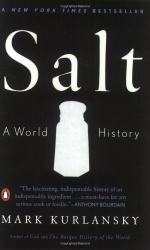
|
Acid
A chemical compound with a ph greater than 7.
Base
This is a chemical compound with a ph less than 7.
Kibbutz
This is a collective farm in Israel. The ideal of collective farming was popularized by Theodore Herzl and became a reality once the state of Israel was founded.
Soy
This is a legume that has become a dietary staple in China.
Natron
Called poor man's salt it was often used by the poor when table salt was not available.
Ostia
This was the most important port of ancient Rome and an important salt works.
Garum
This is a condiment common to ancient Roman cuisine made of a salty brine and fermented fish.
Gabelle
This was the name for the hated salt tax in France. Each French person was required to buy a certain amount of salt from the state each year and was made even more unjust...
(read more Object Descriptions)
|
This section contains 213 words (approx. 1 page at 300 words per page) |

|




